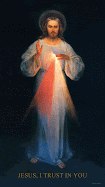"Virtue, Liturgy and Jesus of Nazareth"
Plenary Session Speakers Included
Robert Araujo, S.J., Boston College:
"Benedict XVI, The Virtues, and Catholic SocialThought"
Claudio Burgaleta, S.J., Fordham University:
"Benedict XVI: Theology of the Word ofGod"
Christopher Cullen, S.J., Fordham University
Joseph Godfrey, S.J., St. Joseph’s University:
"A Catholic Philosopher Looks at Spe Salvi"
Joseph Koterski, S.J., Fordham University:
"The Fourfold Sense of Scripture in Benedict XVI's Jesus of Nazareth"
John M. McDermott, S.J., Sacred Heart Major Seminary:
"Benedict XVI and the Theological Virtues"
Bruce Morrill, S.J. Boston College:
"Worship in Spirit and Truth: A Sacramental/Liturgical Theologian Engages Ratzinger"
Joseph Mueller, S.J. Marquette University:
Edward Oakes, S.J. Mundelein Seminary:
"The Biblical Christ and Apologetics According to Cardinal Dulles"
Selected talks above are available for audio (.mp3) download. The papers from this and
the last two conferences on Pope Benedict XVI are in the process of publication by
St. Joseph's University Press.
Link (here)



 the Jesuits, who were strong
the Jesuits, who were strong 






























